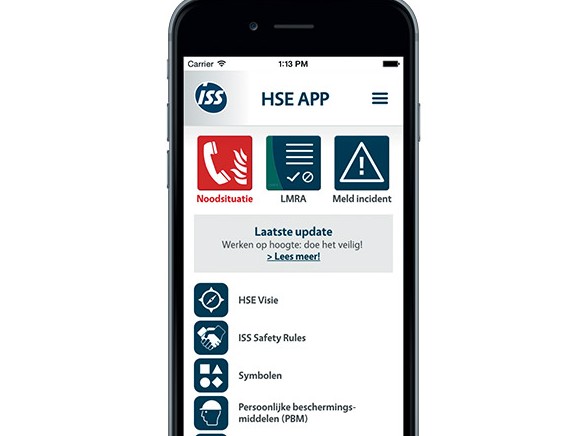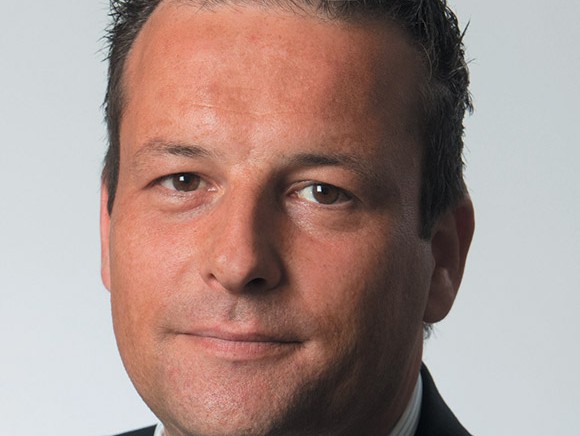
Employees are the most valuable capital for service organisations so the health and safety of facilities personnel should be a top priority, according to Mark Steinbusch from ISS. Good performance demands healthy people, safe work processes and the right equipment.
Policymakers and company managers should continually strive to guarantee employee health and safety. Companies should help each out in this area from a corporate social responsibility (CSR) perspective. So says Mark Steinbusch, who has been working at ISS Facility Services since 2002. The company was founded in Copenhagen in 1901 and has since grown into one of the largest facility services organisations in the world. Mark has previously worked as an operational manager in the healthcare sector and the chemical industry, and he was involved in various aspects of risk mitigation within both of those sectors. He has been the head of a nationwide team of HSE advisors and safety experts since 2013.
“It is important that a company has a vision related to health, safety and the environment (HSE),” states Mark. “That vision can be straightforward, such as 100% avoidance of serious accidents because that’s a must from both a social and a commercial point of view – socially because service companies depend on the performance of healthy people and therefore have an intrinsic interest in taking care of their employees, and commercially because if the company’s own image is linked to employee accidents or injuries its reputation suffers damage as a result. Long-term brand protection is more important than short-term profit. Internationally active publicly-listed companies know better than most that a serious accident can have disastrous consequences, especially if they can’t prove that they did everything in their power to prevent the incident happening.”
The majority of the companies active in the industry have known for decades that certain activities in their environment carry a heightened risk. However, service companies working in the support chain must also be aware of those risks – in whatever area. Mark: “Especially those companies that supply several services in different segments benefit from a clear, integral HSE vision. Cleaning or catering are not high-risk activities in principle, but we know that most workplace accidents are the result of a simple fall. Therefore, a facilities employee should be aware of the dangers posed by a wet, smooth or greasy floor – not only to themselves but also to their customers.”
It is advisable for all companies to start by setting HSE targets, but the company culture ultimately determines their degree of success. “Putting HSE rules down on paper is a good start, but consistent behaviour is essential if people are to stick to them, and the senior managers and directors must lead by example,” says Mark. “Internationally active companies benefit from the fact that HSE standards can be agreed mutually, drawing on knowledge of several industries and services and the potentially high-risk activities in this area. And even more importantly, today’s software enables us to measure HSE performance, so HSE-based KPIs can be a powerful management tool. However, the company’s vision and culture determines whether managers will be evaluated based on HSE-related targets in addition to the more conventional ones such as growth, profit margin, customer satisfaction and employee satisfaction.”
In addition to having a vision, setting targets and tapping into international knowledge, it is also wise to conduct ongoing analysis. In the past year intensive research has revealed that, at ISS, well over half the potential risks can be grouped into one of three categories: information, instructions and training, first-aid training, and first-aid organisation. “This conclusion was striking,” comments Mark. “After all, we provide an excellent training programme to teach our employees the right skills. The bottleneck was identified in local awareness on the part of the client and the facilities team.”
ISS regularly finds that clients have failed to conduct a sufficient risk assessment for outsourced services, or that employees are insufficiently involved in first-aid drills. However, it is crucial to work together in this way in order to prevent accidents happening and to minimise the consequences. “Workplace safety should be on the monthly agenda of facilities teams and clients alike.” Last but not least, he believes that companies should help one another driven by their sense of corporate social responsibility. “After all, the entire facilities industry benefits from a good safety image,” says Mark. “The most complex aspect isn’t drawing up a policy and a vision, but rather changing the culture and keeping employees on the shop floor consistently informed. Smartphones are useful tools in that respect; everyone has a smartphone nowadays. An app can help to provide insight into the workplace risks. Instructional videos can be provided and incidents can be reported using the inbuilt camera function. We’re definitely going to stimulate employees to report risky situations, and especially dangerous ones. Push messages can also help employees to stay alert and cleaners can be brought up to speed quickly, such as about the latest health and safety instructions when a new method is being introduced.”

“In our view, we aren’t the only ones to benefit from this kind of knowledge,” concludes Mark. “A safe world is better for everyone, which is why the ISS HSE app can be downloaded for free from the various app stores.”
www.nl.issworld.com/verantwoordelijkheid/HSE/hseapp
Mark Steinbusch: “Workplace safety should be on the agenda of facilities teams and clients alike.”
Source: © ISS World